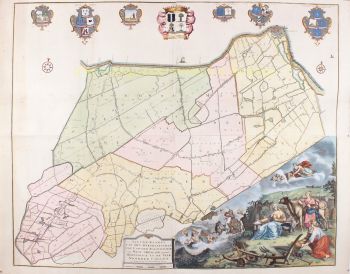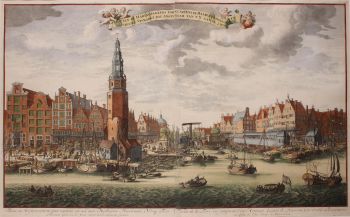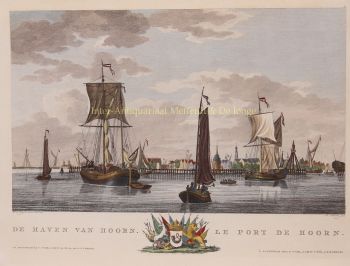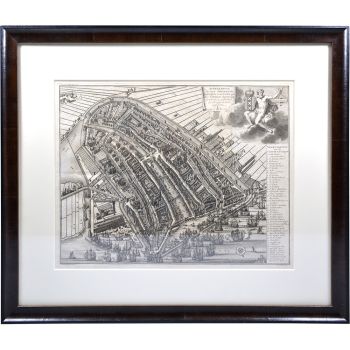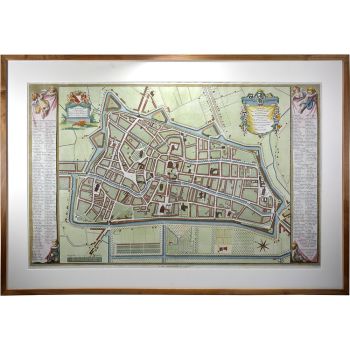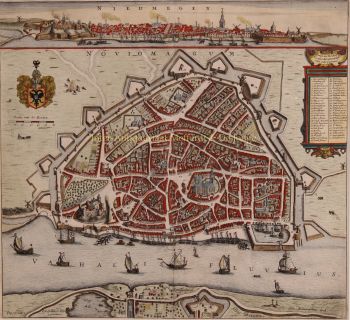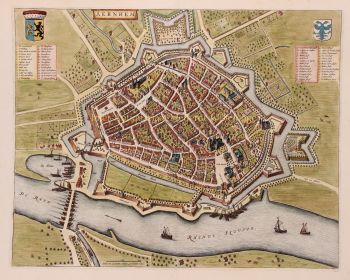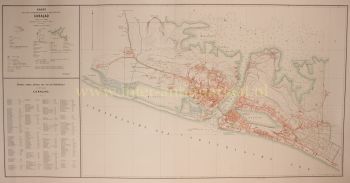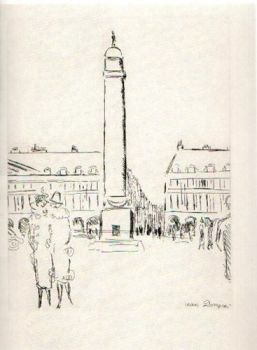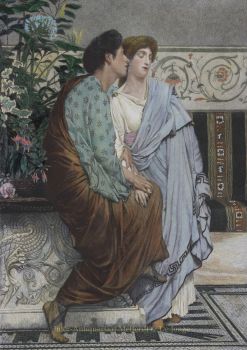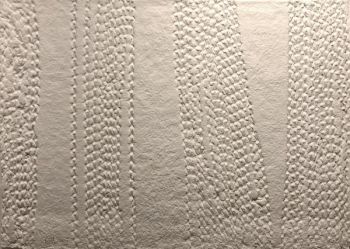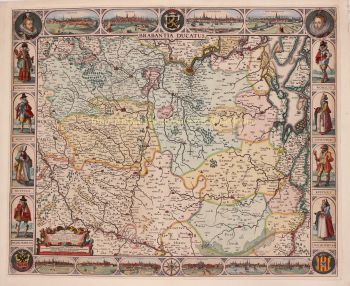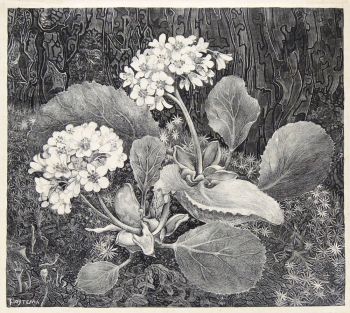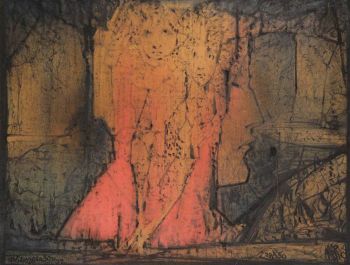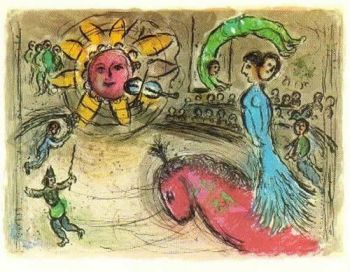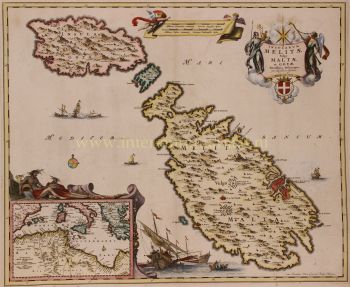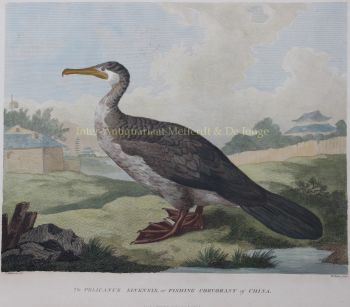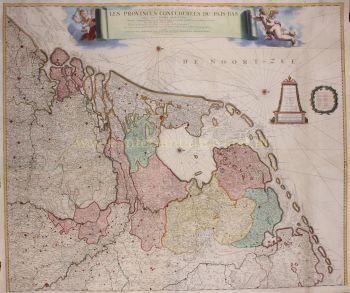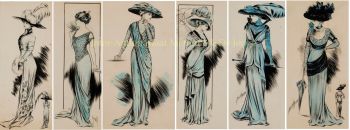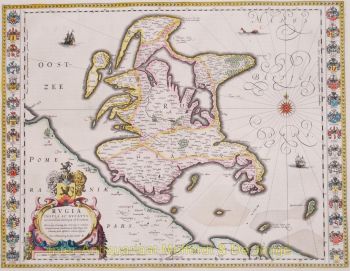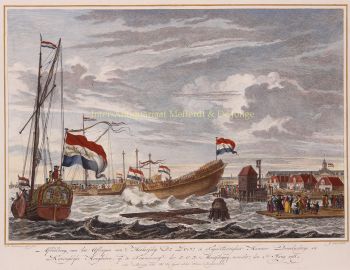Amsterdam 1783
Hendrik Leth
€ 2.250
Inter-Antiquariaat Mefferdt & De Jonge
- Sobre arte
PLAN TRES EXACT DE LA VILLE FAMEUSE MARCHANDE D'AMSTERDAM. Copper engraving printed on two sheets by Hendrik de Leth, published 1783. Measures 57.5 x 88 cm. On 24 and 27 April 1734, the following advertisement appeared in the Amsterdamsche Courant: "Te Amsterd. By Hend. De Leth on the Beurssluys, is now published, an entirely new and accurate Plan of the city of Amsterdam, with many additions that were not found in any previous plans; decorated on both sides with the coats of arms of the Wel-Ed. en Groot Agtb. Heeren Burgemeesteren deezer stad, zedert de Reformatie tot nu, door voorname Liefhebbers keurig nagezien". One could choose between a rich version with family coats of arms and the coats of arms of the Amsterdam mayors on both sides, and a plain version without the coats of arms. This copy is the version without the coats of arms. Hendrik de Leth had made a reliable map amidst many competitors (such as Covens & Mortier), which was very useful in the city administration. The dignified French title seems destined for a more representative function, but for the rest the print is entirely in Dutch, which was convenient for the artisans and administrative users. Under the title we read "Gravée et mis au jour Par Henry de Leth a l'enseigne du Pecheur". This can be translated as "Engraved and updated to the present day by Hendrik de Leth under the label of Visser." The shop of publisher Nicolaes Visscher II kept this name, even after his death in 1702. Hendrik de Leth and also his father Andries worked in Visscher's shop when he was still alive. After Visscher's death his widow Elisabeth Verseyl continued the business until 1726. From about 1720, however, the daily management was in the hands of Andries. After he took over the business, he maintained the shop's well-known name. After his death in 1731, Hendrik, the son of Andries, took over. He too continued with the same shop name. The map is extremely clear and uncluttered, with only the main buildings standing out. Hendrik de Leth made the map after an older example and provided it with completely new decoration. An interesting difference between the map by De Leth and the earlier one is that De Leth gave the buildings engraved in the uprising a shadow. The sunlight here comes from the left, which corresponds to the eastern morning sun. To the left of the decorative, opening curtain, we see a Caarte van Amstelland. It is striking that in the legend block in the top right-hand corner, an I is mentioned after nine buildings. The legend explains this with the words NB Daar een I bystaat betekent Jansenisten. Jansenism, named after Cornelis Jansenius (1585-1638), was a religious and political movement from the seventeenth and eighteenth centuries that developed mainly in France as a reaction to certain developments in the Catholic Church and to the absolutism of the rulers of those days. The Jansenists' way of life was characterised by their ascetic rejection of the world and their pessimistic ethics. They also rejected, among other things, papal infallibility. The accentuation of the buildings on the map that had a relationship with Jansenism suggests that the engraver and publisher Hendrik de Leth adhered to this political movement. The central representation under the map is designed with care and taste. The title plate is beautifully incorporated into a group of figures, in which the city virgin is flanked by the two lions of the city arms and the river gods of Amstel and IJ, while Fortuna rises from the sea. The compass rose and ruler, like the title, have been given a three-dimensional shape as part of this grouping. The city seal and coat of arms above the map are carried by two angels. Literature: Marc Hameleers - Maps of Amsterdam 1538-1865, nr. 114 p.228-231 Price: Euro 2.250
- Sobre artista
Hendrik de Leth (Amsterdã, 31 de maio de 1703 - Amsterdã, 17 de junho de 1766) foi um impressor, gravador, gravador, cartógrafo, desenhista, livreiro, negociante de arte, editor de gravuras, colecionador de arte e colecionador de naturalia.
Hendrik de Leth era filho de Andries de Leth (cortador de chapas, livreiro, 1662-1731) e Nelletje Middenheespen. Hendrik tinha um irmão mais velho, Christiaan de Leth. Em 1742, Hendrik casou-se com Sophia Otto, que morreu em 1753. O casamento deles não teve filhos. Era provável que o sobrinho Andries, filho do irmão de Hendrik, Christiaan, se tornasse o sucessor dos negócios de Hendrik. No entanto, ele morreu em 1743. Em 1766, Hendrik de Leth fez um testamento pouco antes de sua morte, pelo qual Catharina le Blanc, neta do irmão Christiaan, tornou-se herdeira. Em 30 de setembro de 1766, ocorreu o leilão de sua propriedade.[3]
Em 1728, Hendrik ingressou na guilda dos livreiros. Antes disso, ele foi aluno de seu pai Andries de Leth, que assumiu o mapa, impressão e negociante de arte 'Op de Beurssluys, em den Visscher' em Amsterdã do cartógrafo e gravador Nicolaas Visscher II. Hendrik de Leth, por sua vez, assumiu esta empresa após a morte de seu pai em 1731.
Já em 1725, a obra Imagens da cidade Wijdtvermaarde de Amsterdã foi publicada, além de seus mais importantes Edifícios e Gesites, todos desenhados com precisão após a vida e publicados em Amsterdã.
Seu trabalho mais conhecido com 100 impressões foi publicado em 1730: O esplendor da bênção Kennemerlant : mostra muitas faces gloriosas dos locais de lazer mais importantes deste último, casas nobres, vilas e edifícios da cidade : começando com Kastrikum (...) / desenhado após a vida e no cobre trazido por H. de Leth; e brevemente descrito por M. Brouërius van Nidek. - Amsterdã: De Leth, 1730. Muitas gravuras feitas por De Leth em Amsterdã podem ser encontradas nos Arquivos da cidade de Amsterdã.
Como cartógrafo, De Leth era mais conhecido por seu Novo Atlas Geográfico e Atlas Histórico, Van de Zeven Vereenigde Nederlandsche Provintien, publicado em 1740. De Leth também ficou conhecido pelas gravuras em cobre que fez por volta de 1758 do Mapa Geral da Colônia ou Província do Suriname segundo o desenho de Alexander de Lavaux.
Você está interessado em comprar esta obra de arte?
Artwork details
Related artworks
- 1 - 4 / 24
- 1 - 4 / 12


